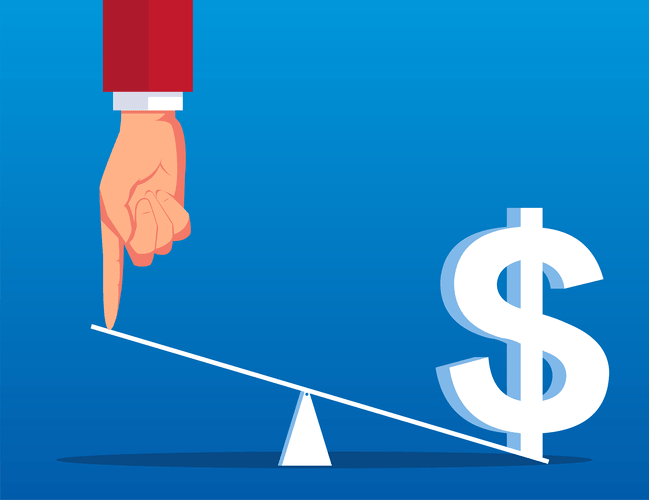Payroll Expense Vs Payroll Liability
FSLA also requires that payroll records be kept on file for at least three years. You can use software to reconcile the payroll liability data and ensure you’re processing payroll correctly. Assume that a restaurant owes workers $3,000 in payroll for difference between expense and liability the last five days of March and that the next payroll date is April 5. Examples of typically encountered accruals and deferrals journals are shown in our accrued and deferred income and expenditure journals reference post.
Types of expenses
- A company’s general ledger is a record of every transaction posted to the accounting records throughout its lifetime, including all journal entries.
- Furthermore, understanding income tax payable aids investors in analyzing earnings quality as it relates to the tax burden on a company’s profits.
- This disparity could lead analysts to make incorrect assumptions regarding the entity’s financial position or earnings potential.
- Now let’s draw our attention to the three types of Equity accounts, discussed below, that will meet the needs of many small businesses.
- Liabilities represent claims by other parties aside from the owners against the assets of a company.
Companies can record a payroll liability each week by debiting payroll expense and crediting payroll liability. The liability goes away once the company hands the accountant a paycheck, resulting in a debit to the payroll liability and a credit to cash. Current liabilities are due within a year and include costs such as payroll, accounts payable and other short-term obligations. Noncurrent liabilities are long-term debts or obligations that are due beyond a 12-month period. Expenses are an essential component of a company’s income statement.
Accrued Expenses vs. Accounts Payable Example
Instead, they reflect the company’s financial obligations and its ability to meet those obligations in the future. Liabilities are typically measured in monetary terms and are reported https://www.bookstime.com/articles/accounts-receivable-in-healthcare on the balance sheet, providing stakeholders with information about a company’s financial health and solvency. Expenses are costs incurred during regular business operations that help generate revenue. Unlike liabilities, which represent obligations, expenses signify the cost of resources consumed in generating income. All liabilities are presented on the balance sheet, a financial statement that provides a snapshot of a company’s financial position at a specific point in time. This statement categorizes liabilities as either current (due within one year) or non-current (due in more than one year).
Next steps for streamlining your payroll process
Liabilities come in various forms, each with a unique impact on a company’s finances. When your team purchases an annual software license, Ramp identifies it as a prepaid expense and helps you amortize it correctly over the subscription period. This automation eliminates the manual work of reviewing every transaction and reduces the risk of misclassification that comes with human error. These are business liabilities that are probable, but not certain; in other words, the need to pay them is contingent on some event. A company orders and receives a shipment of office supplies on June 25.
Introduction to Income Tax Payable and Income Tax Expense
- If a business wants to be a leader in its industry or manage its operations well, liabilities and expenses are essential.
- This change significantly impacted financial reporting for many companies, altering both income tax expense and income tax payable.
- Unlike cash basis accounting, which records expenses when the company pays for them, the accrual method records them when the company earns the revenue or incurs the expense.
- Assets on the left side of the equation (debits) must stay in balance with liabilities and equity on the right side of the equation (credits).
- Income tax payable refers to the current liability on a company’s balance sheet, representing the amount of taxes expected to be paid within the next 12 months.
- From taxes on earnings to withholdings, child support payment processing, additional wage garnishments, and beyond, there are payroll complexities of all different types.
Although both terms relate to a company’s outflow of resources, they represent different financial concepts and have unique impacts on an organization’s financial statements. Both expense and liability result in cash outflows and are well-known to be similar. Every business that is operational and currently in operation has assets and liabilities. It also has income expenses, which are part of the income statement.
- ‘The business is liable for any outstanding amounts it owes for goods or services it has received but has not yet paid for.
- These obligations typically arise from past transactions or events, and they represent claims against the company’s assets.
- On payment day, the liability clears automatically, and the reconciliation download drops right into your month-end folder.
- More specifically, they are considered short-term liabilities or debts owed to suppliers and/or creditors.
- Liabilities refer to debts or obligations a business owes, while expenses represent the costs incurred to generate revenue.
- Moreover, it reduces instances of disputes which can arise if payments are delayed or employees are not paid correctly according to their contracts.
- Understanding the distinction helps in analyzing a company’s financial health, as well as managing cash flow and budgeting effectively.
Is the transaction a cost you incurred to generate future revenue? Capital expenditures (CapEx) differ from operating expenses because they aren’t related to your current day-to-day business needs. Instead, these are long-term investments meant to generate future growth. Being able to distinguish between the two can improve your financial planning and performance for the future.
Key Differences
Liabilities can fluctuate daily as you add new debt and make payments. You can calculate your total liabilities by adding your short-term and long-term debts. Keep in mind your probable contingent liabilities are a best estimate and make note that the actual number may vary. Some may shy away from liabilities while others take advantage of the growth it offers by undertaking debt to bridge the gap from one level of production to another.
How Liabilities and Expenses Differ and Connect
Expenses represent the costs incurred by a business in the process of generating revenue. They reflect a decrease in economic benefits during an accounting period. Expenses are directly linked to the operations that produce income. Liabilities represent what a business owes to outside parties, signifying future economic sacrifices arising from past transactions or events. These obligations are https://echo-me.com/income-statement-example-template-format-how-to/ legally enforceable claims against an entity’s assets. A company incurs a liability when it receives a benefit now but agrees to pay for it later.






